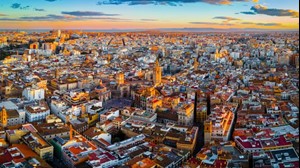News
bp launches plans for low-carbon green H2 cluster in Spain’s Valencia region
bp launched the green H2 cluster of the Valencia region (HyVal) at its Castellón refinery. Led by bp, this public-private collaborative initiative is intended to be based around the phased development of up to 2 GW of electrolysis capacity by 2030 for producing green H2 at bp’s refinery.
HyVal is expected to play an instrumental role in decarbonizing the operations of bp’s Castellón refinery. Its transformation—including green H2, biofuels and renewable energy—could see bp invest a total of up to €2 B in Castellon by 2030.
Green H2 will support decarbonization of the refinery’s operations, replacing its current use of gray H2 generated from natural gas. Its production of biofuels is expected to increase three-fold, to 650,000 tpy 2030. Green H2 will also be used as a feedstock in biofuel production, specifically of sustainable aviation fuel (SAF).
HyVal was launched today by Andrés Guevara, president of bp Energía España, in a presentation attended by more than 200 people, including Spain’s Minister of Industry, Commerce and Tourism, Reyes Maroto, the president of the Generalitat Valenciana, Ximo Puig, and the mayor of Castellón, Amparo Marco.
Andrés Guevara, said, “We see Hyval as key to Castellón’s transformation and critical to supporting decarbonization across the Valencia region. We aim to develop up to 2 GW of electrolysis capacity by 2030 for green H2 production, helping decarbonize our operations and customers. And we plan to triple the refinery’s production of biofuels to help meet the growing demand for lower carbon fuels such as SAF. We believe HyVal can play an important role in Valencia region’s efforts to decarbonize and help support thousands of industrial jobs across the region.”
In addition to being used by bp at the refinery, the green H2 produced will also be used in key hard-to-abate industries in the Valencia region, such as the ceramic industry replacing the natural gas used in their processes, chemical industries to produce green ammonia and in heavy transport.
HyVal aims to support the development of Valencia region into a leader to produce green H2 in Spain. Its H2 production is expected to be developed in phases.
The first, anticipated to be operational in 2027, will involve the installation of an electrolysis plant with at least 200-MW capacity at Castellón refinery. This initial stage would be expected to produce up to 31,200 tpy of green H2. Use of this green H2 to replace natural gas is estimated to be able to avoid more than 300,000 tpy of CO2 emissions when used first in the refinery and then in thermo-intensive industries and heavy transport. This green H2 will also be used as a feedstock to produce SAF at the refinery.
In the second phase, which could be completed in 2030, the electrolysis plant would be expanded to reach a capacity of up to 2 GW of net installed power. Green H2 production from such a world-scale plant could support both regional and national demand, as well as positioning Valencia region to export green H2 to the rest of Europe through the Mediterranean corridor of green H2 H2Med.
The Valencia region is already home to strategic infrastructure and facilities that can play a critical role in developing a green H2 economy, including ports and wind and solar power generation capacity. bp’s Castellon refinery is well-connected with national and international markets, enabling it to support decarbonization of hard-to-abate industries in Spain, like transport and chemicals.
Carolina Mesa, bp’s vice president H2, Spain and New Markets, said, “The production of green H2 will be another step in strategic energy autonomy for Spain and more widely for Europe.”
A broad initiative, led by bp, HyVal also includes the potential participation from companies from various industries in the region, public institutions and research and training centers. It is anticipated that the full development of HyVal will create up to 5,000 direct, indirect and [induced] jobs in the region.
bp aims to build a leading position in green H2 globally and produce 0.5 MMtpy−0.7 MMtpy of mostly green H2 by 2030. It is progressing several green H2 projects throughout the world, including in the UK, Australia and Germany.


